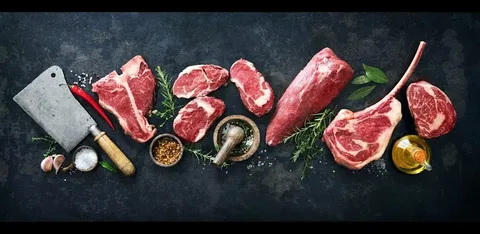In an industry dominated by electric saws and high-speed processing equipment, the tradition of using hand sawed meat tools remains invaluable in modern butchery. While automated cutting systems offer efficiency, hand-sawing techniques provide unparalleled precision, craftsmanship, and control—qualities that skilled butchers continue to rely on.
From specialty cuts to ensuring safety in the workplace, a traditional butcher’s saw in Sydney remains a cornerstone of quality meat preparation. Let’s explore why these techniques still play an essential role and how professional butchers benefit from expertly crafted meat hand saw blades in Australia, abattoir equipment in Australia, and the tools of their trade.
The Art of Precision with Hand-Sawed Cuts
Unlike industrial meat cutters, hand-sawing allows butchers to make deliberate, controlled movements that preserve the integrity of the meat.
Benefits of Hand-Sawing Over Mechanical Saws
- Custom Cuts & Specialty Portions – Hand saws allow butchers to carve precise cuts tailored to customer preferences, whether preparing gourmet steak portions or maintaining the natural bone-in structure for flavour enhancement.
- Minimal Bone Fragmentation – Mechanical saws can create bone splintering, which impacts presentation and texture. A skilled butcher using hand-sawed meat tools can produce clean cuts while keeping bones intact for better cooking results.
- Better Texture & Presentation – Machine pressure can distort the natural structure of meat, leading to uneven textures. Hand-sawed cuts maintain the natural composition and juiciness of the meat, improving the final dish.
Essential Tools for Mastering Hand-Sawed Butchery
A skilled butcher relies on specialised tools to perform hand-sawed techniques with efficiency and accuracy.
Key Equipment Used by Professional Butchers
- Meat Saw Blades Australia – High-quality stainless-steel blades ensure smooth, precise cuts while resisting corrosion and maintaining durability for long-term use. Regular sharpening enhances cutting efficiency.
- Butcher Saw Sydney – Designed for manual use, butcher saws provide controlled, measured cutting motions for processing whole carcasses, primal cuts, and specialty portions without excessive force.
- Abattoir Equipment Australia – From hand-held bone saws to splitting axes, professional butchery tools ensure efficient carcass preparation, offering superior handling in slaughterhouses and butcher shops.
Safety & Protective Gear for Butchers
Safety is paramount in any butchery setting, where sharp tools and heavy-duty cutting equipment demand careful handling.
Must-Have Protective Gear
- Butchers Apron – Heavy-duty aprons protect clothing and skin from exposure to raw meat, blood, and sharp cutting instruments. Many aprons feature thick leather or reinforced canvas for added durability.
- Safety Gloves – Cut-resistant gloves provide grip and dexterity, reducing the risk of accidental slips when working with sharp blades or handling wet meats. Steel mesh gloves offer additional finger protection.
- Whetstones – Regular sharpening maintains saw and knife efficiency, reducing strain on the butcher and preventing erratic, unsafe cutting motions. Using a whetstone properly ensures even blade wear for precision cuts.
The Importance of Hand-Sawing in Specialty Meat Cuts
For high-quality butchery, certain meats and cuts benefit significantly from manual saw techniques, where precision is key to achieving the desired texture and taste.
Specialty Cuts Best Hand-Sawed
- Tomahawk & Bone-In Steaks – These premium cuts require careful butchering to preserve the bone and enhance the meat’s flavour profile. Hand-sawing ensures clean separation without unnecessary bone splintering.
- Dry-Aged Meats – Aged beef requires careful cutting to maintain the integrity of the meat, ensuring thick portions that retain marbling and texture for superior cooking results.
- Game & Artisan Meats – Specialty meats such as venison, boar, and duck require a skilled butcher to hand-saw precise portions, minimising waste while maximising taste.
How Butchers Preserve Quality with Hand-Sawing
Hand-sawed techniques are essential for maintaining traditional craftsmanship while ensuring top-tier meat quality. Butchers who favour manual methods produce superior results compared to mechanical cutting.
Techniques Used by Skilled Butchers
- Controlled Pressure & Angling – Unlike machine-cut meats, a butcher applies just the right pressure at an angle that complements the natural structure of the meat, allowing for clean slices without uneven tearing.
- Minimising Waste – Skilled butchers ensure every part of the carcass is efficiently used, creating fine cuts that maximise yield while reducing unnecessary discard.
- Texture & Freshness Preservation – Hand-sawing prevents excessive bruising or friction burns, ensuring meat retains its original texture and moisture content.
The Sustainability Benefits of Hand-Sawed Butchery
Hand-sawing techniques not only preserve traditional craftsmanship but also contribute to more sustainable meat processing practices. By avoiding excessive reliance on industrial machinery, butchers can minimise waste, improve efficiency, and reduce energy consumption in their operations.
How Hand-Sawing Supports Sustainability
- Reduced Energy Usage – Unlike electric saws, manual butchering tools do not require constant power consumption, lowering overall energy costs in small-scale operations.
- Minimal Waste Production – Hand-sawed cuts allow butchers to make more precise cuts, reducing excess trim and ensuring maximum meat yield from every carcass.
- Better Use of Bones & Offcuts – Skilled butchers using hand-sawed meat tools can preserve bones for broth making, marrow extraction, or secondary use in specialty dishes, minimising discarded materials.
- Lower Equipment Wear & Tear – Industrial cutting machines require frequent servicing and replacement, whereas durable meat saw blades in Australia and industry-level butcher saws in Sydney last longer with proper care and sharpening using whetstones.
By incorporating hand-sawing practices alongside modern methods, butchers can create a more balanced, eco-friendly approach to meat processing while ensuring the highest quality cuts and textures.
SUMMARY
Preserving Tradition in a Fast-Paced Industry
Despite advancements in automated processing, hand-sawing techniques remain an essential skill in butchery. The ability to work carefully, respect traditional craftsmanship, and create superior meat cuts ensures that classic butchering methods continue to thrive in today’s market.
By using high-quality hand-sawed meat tools, butcher saw Sydney equipment, and essential abattoir equipment in Australia, professional butchers can maintain precision, safety, and excellence in their craft.




